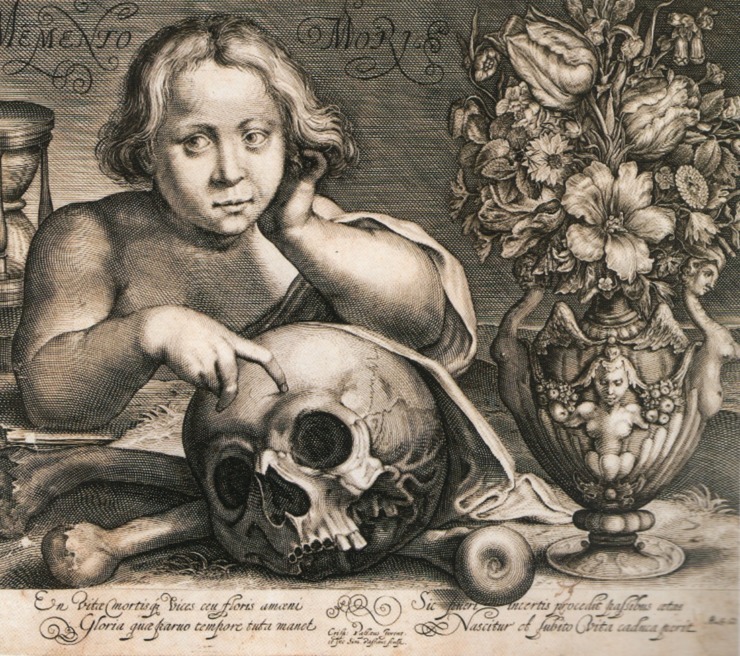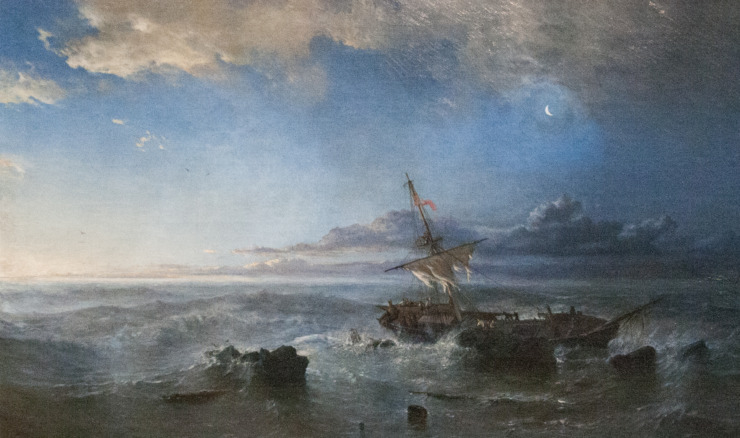A Song of Opposites
Welcome joy, and welcome sorrow,
Lethe’s weed and Hermes’ feather;
Come to-day, and come to-morrow,
I do love you both together!
I love to mark sad faces in fair weather;
And hear a merry laugh amid the thunder;
Fair and foul I love together.
Meadows sweet where flames are under,
And a giggle at a wonder;
Visage sage at pantomine;
Funeral, and steeple-chime;
Infant playing with a skull;
Morning fair, and shipwreck’d hull;
Nightshade with the woodbine kissing;
Serpents in red roses hissing;
Cleopatra regal-dress’d
With the aspic at her breast;
Dancing music, music sad,
Both together, sane and mad;
Muses bright and muses pale;
Sombre Saturn, Momus hale; –
Laugh and sigh, and laugh again;
Oh the sweetness of the pain!
Muses bright, and muses pale,
Bare your faces of the veil;
Let me see; and let me write
Of the day, and of the night –
Both together: – let me slake
All my thirst for sweet heart-ache!
Let my bower be of yew,
Interwreath’d with myrtles new;
Pines and lime-trees full in bloom,
And my couch a low grass-tomb.
-John Keats
Enjoy Artistic Representations of “A Song of Opposites” by John Keats

Memento Mori engraving by Simon van der Passe after Crispyn van der Passe the Older, 1612.

The Day after the Shipwreck by Paul Jean Clays, 1853.
Listen to Readings of “A Song of Opposites”
Listen to this Musical Interpretation of “A Song of Opposites” by John Keats
John Keats Biography
Keats was born in London on Oct. 31, 1795; a few weeks later he was baptized at St. Botolph Without Bishopsgate Church, near where his parents lived and father worked as the manager of a stable owned by his father-in-law. Keats was the eldest of four children, with George, Tom, and Fanny following him. The family was well off enough that the boys were sent to Clark’s Academy in Edmonton at what is now the north London borough of Enfield for their education; it was riding his horse home from a visit to the school that Keats’ father fell and died the next day. His mother remarried (rather quickly, in fact), fought with the rest of the family, and died fairly young from consumption or tuberculosis, which was all too common at the time and would eventually claim the life of Keats’ youngest brother, Tom, as well as Keats himself.
He was apprenticed to a local doctor, but the relationship didn’t seem to work too well. He ended up working at St. Guy’s Hospital in the Southwark district of London, continuing his medical training and writing poetry (the site of the original St. Guy’s in now occupied by London’s tallest office building, known locally as “The Shard”).
While Keats had numerous city connections (Anita Miller also has a “Keats in the City” walk), it is with Hampstead that he is most closely associated. Fellow poets lived there, as did the editor who first published his poetry. Artists whom Keats associated with lived there. Keats himself would move there with his brothers. Keats and his friends would wander Hampstead Heath, talking and arguing poetry and the issues of the day. After moving into Wentworth House in Hampstead, Keats wrote five of six famous odes, including “Ode to a Nightingale.” And it would be at Wentworth House in Hampstead that Keats would realize that he was dying from the same disease that took his mother and younger brother.
Enjoyed A Song of Opposites by John Keats and want to know more about Keats’ life? Try A Month With Keats: A Walk Into His Life
That’s it for A Song of Opposites!
BUY ‘HOW TO WRITE A FORM POEM’ NOW!
